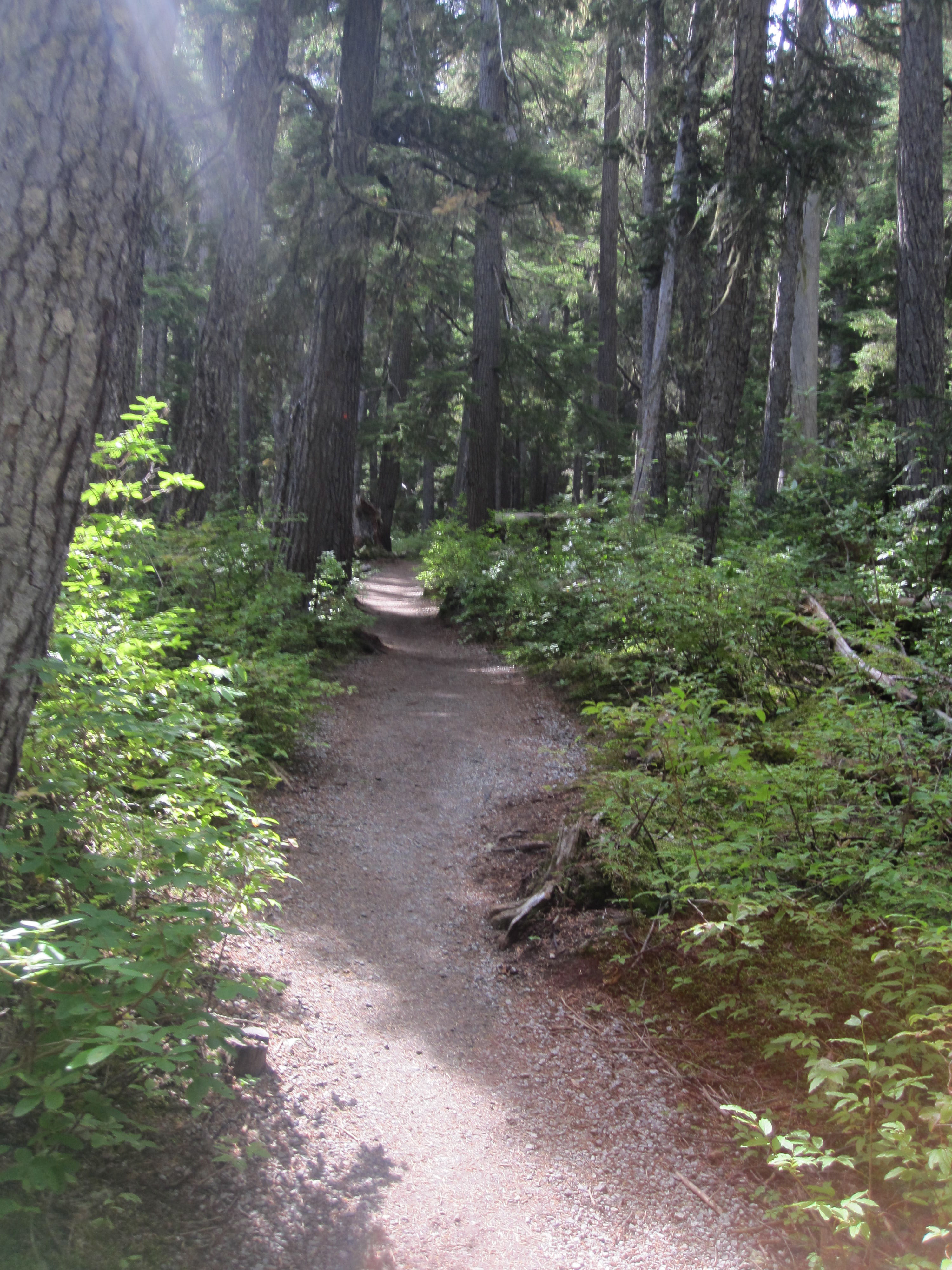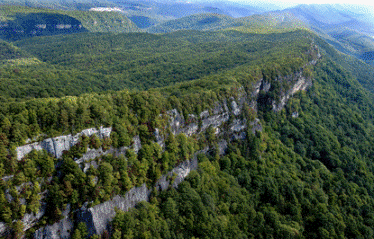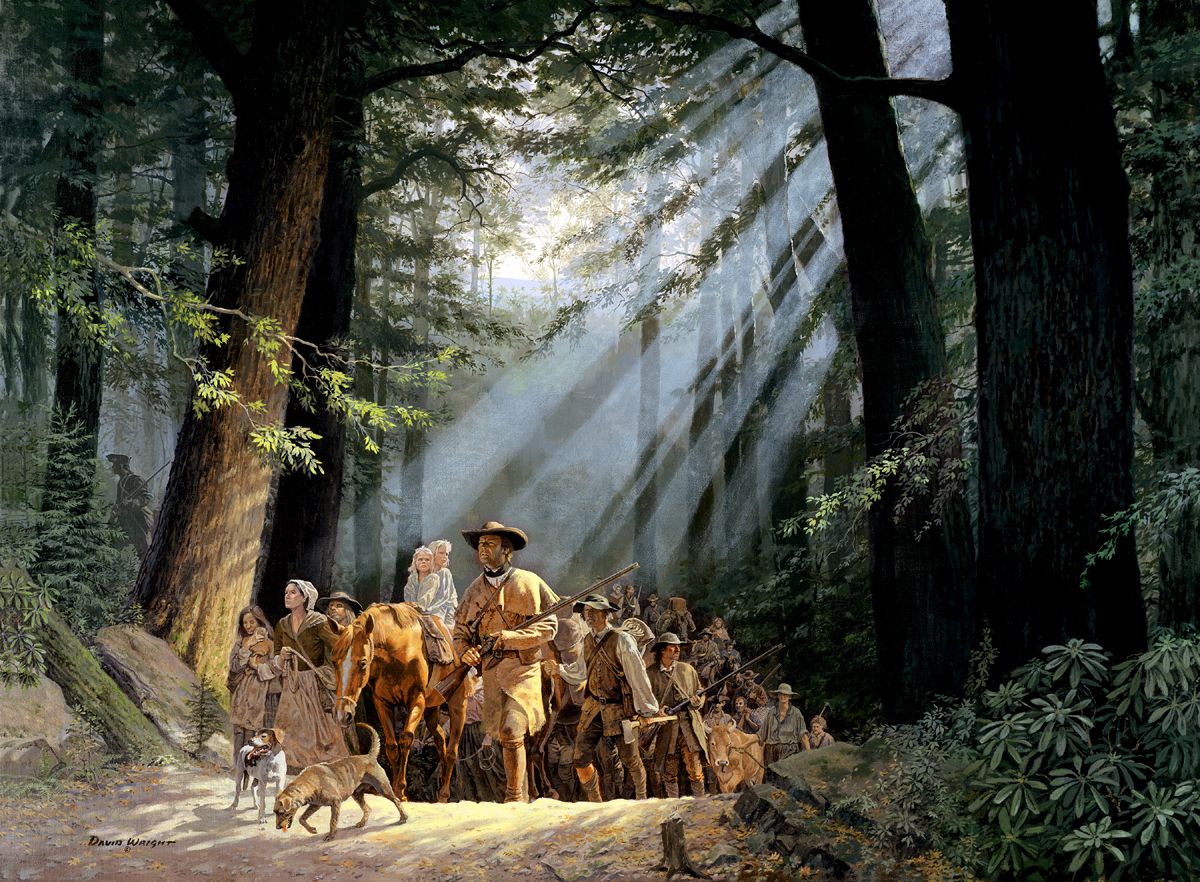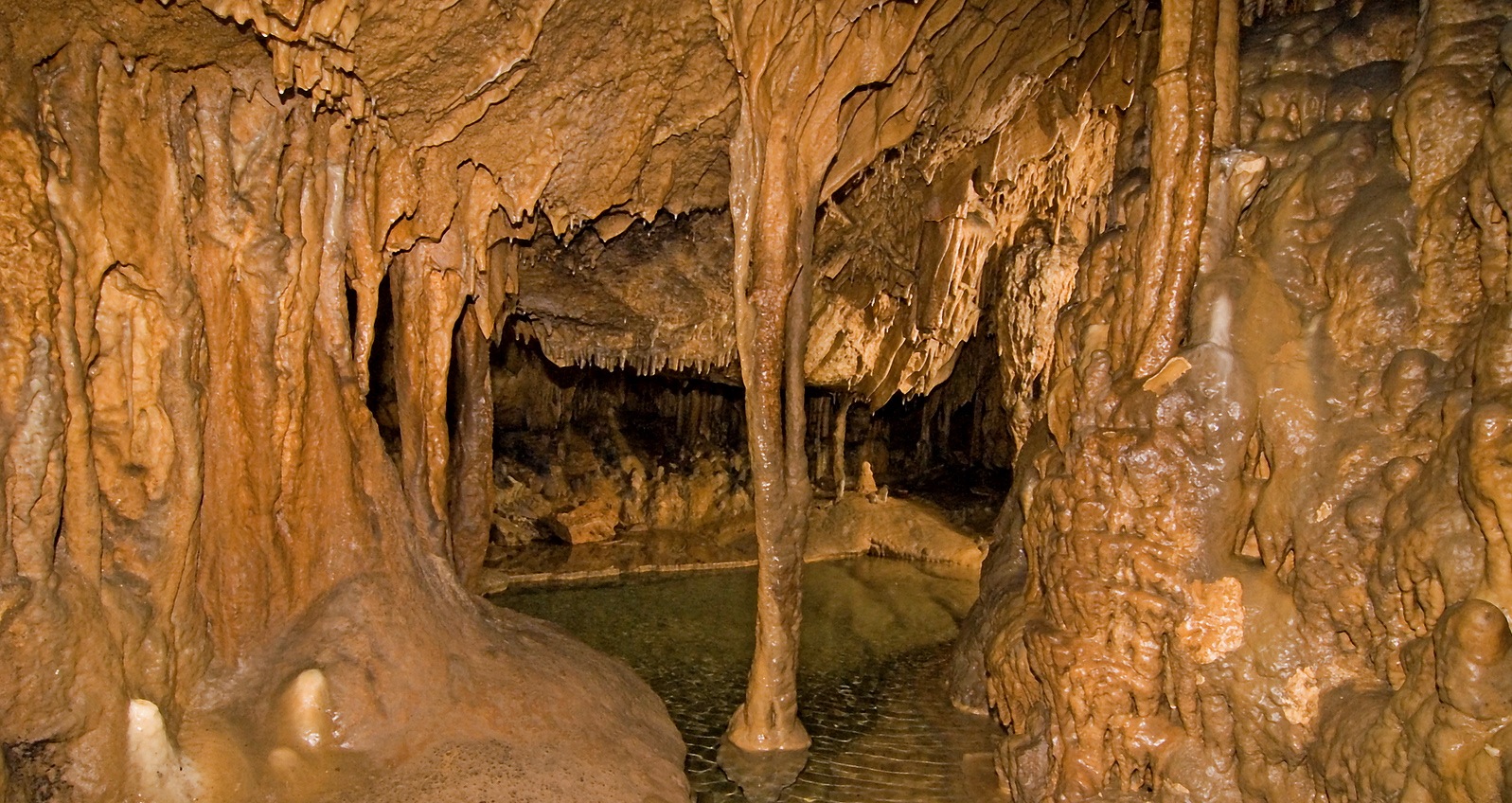| Cumberland Gap is Kentucky's most spectacular backpacking destination. It is a national park and has a little bit of everything. This is the most historic spot in the state. Indeed, it's where the state's White history began. Kentucky was separated from Virginia and Tennessee by a series of long, high, steep mountains (upper left) that were insurmountable to settlers. The Gap is the only break in those mountains for hundreds of miles. As seen in the historic picture (upper right), Daniel Boone took advantage of this and led pioneers through the Gap to create the first settlements in the Blue Grass. Because of the rugged terrain, the area around the Gap remained undeveloped long enough that the Park Service could claim it and protect it. Today, "up on the mountain," the old Native Americans' Cumberland Trace is now Ridge Trail, which follows the Virginia - Kentucky state line from the Southwest to the Northeast corner of the park. Ridge Trail (photo at right) remains basically level, climbing very gradually from its beginning at The Pinnacle to its end just beyond White Rocks. For most of Kentucky's Boy Scout troops, backpacking this trail is an annual event, with successful completion earning each boy a special uniform patch. Up on the mountain are also several historic sites. Most important of these is Hensley Settlement, an entire pioneer community which was slowly abandoned during the first half of the 20th Century but has been carefully preserved by the National Park Service as the best example still standing of an authentic 1800s Appalachian Mountain village. There are also The Pinnacle, the Boulder Patch, Sand Cave and White Rocks. Unlike the Red River Gorge, Natural Bridge or Mammoth Cave, Cumberland Gap is not a day park. Almost everything in it is reached by hiking and the attractions are several miles up on the mountain. You need at least a three day weekend, and preferably a week, to hike the length of the park and see everything it has to offer. |
 |





